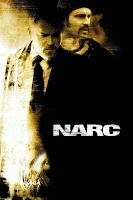Moss Park TV: GEORGE STREET REVITALIZATION – Long-term Care
Transformational long-term care facility for some of Toronto’s most vulnerable populations being built in the Moss Park area.
With the revitalization of Regent Park considered a success, the area west of Sherbourne Street, considered part of the Moss Park community, is witnessing a symphony of construction activity. George Street, once the privy of rooming houses, low-income housing and Toronto’s largest homeless shelter, is now getting a City of Toronto initiated makeover. It now appears that governments are embracing the notion that the continued wellbeing of our communities requires a certain level of fiscal investment, and that the social safety net needs to be expanded, not diminished.
In addition to the redevelopment of Seaton House, the city oldest and largest men’s shelter, (see part one of the George Street Revitalization), the George Street Revitalization will feature a long
-term care facility and senior support services. The goal of these new services in the community of Moss Park, will be to expand that housing continuum for seniors who maybe homeless, and who have used the shelter system as a form of long-term housing to transition out of the shelter programs into long-term care. As Paul Raftis, General Manager, Seniors Services and Long-term Care, at the City of Toronto, puts it: “The George Street Revitalization Project goes beyond rebuilding the facility to really being able to re-imagine integrated care and developing a campus of care for individuals so that they can get the right supports and to make sure that the right supports are available to them. Having so many different services at one place is really going to allow the individuals to get the care that need.”
While the City of Toronto does maintain ten long-term care homes, with two thousand six hundred and forty-one residents, there are no programs specifically focused on older adults who are experiencing homelessness. In fact, older adults who may be considered homeless, face significantly higher mortality rates than the general older population. According to a report by the Institute for Human Development, Life Course and Aging, older homeless people face “respiratory problems, stomach ulcers and gastritis, circulatory problems, dental problems, eye problems, blood pressure, and asthma or shortness of breath, and are likely to die at a younger age.” Mental health (schizophrenia, bipolar disorder, depression, anxiety, and dementia) is also a considerable factor among older homeless people, with women statistically experiencing higher rates than men.
Combined with these complex health and mental issues, older homeless adults also face substantial institutional barriers when it comes to accessing social assistance programs. For example, health services may not be available when and where they need them, they may have to wait too long, and may not be able to afford them.
In general, having a lack of knowledge of the existing range of services available to senior adults is yet another barrier that contributes to the unique situation faced by older adults who may be at risk for homelessness.
The expectations for the new centre are certainly high from the standpoint of the City of Toronto, meeting the needs of so many vulnerable and marginalized people will be a challenge, but none-the-less critically important. Time will tell what the eventual effect will be, and whether or not the George Street Revitalization project and the coming together of best practices in a high-tech facility, will really make a great place and a great experience for the clients who are going to live there?
To see our interview with Paul Raftis, General Manager,
Seniors Services and Long-term Care, at the City of Toronto
https://youtu.be/njtQYRrlSzg
Written by
Dimitrije Martinovic
Journalist
FOCUS Media Arts Centre



Comments
Post a Comment